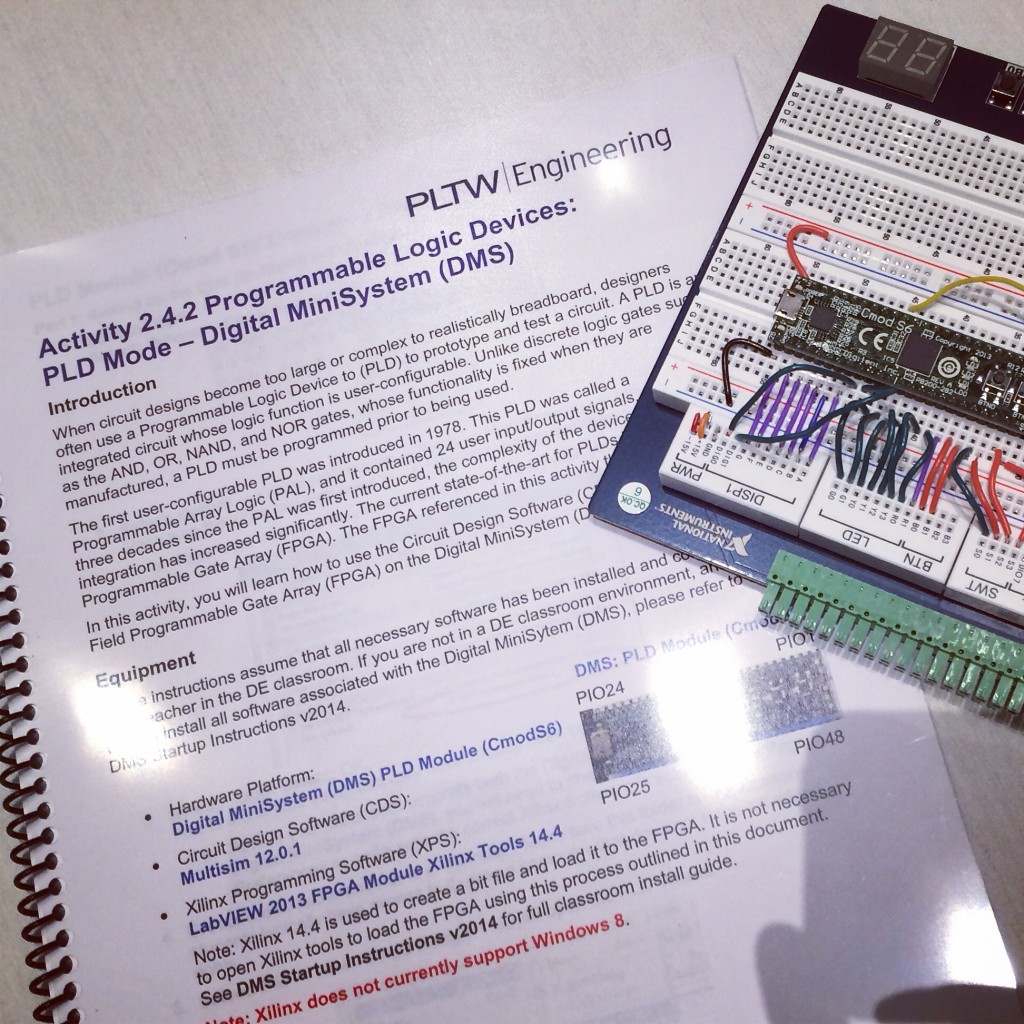One of the best parts of traveling to a conference like ASEE is getting to participate in hands on workshops. I love getting to go to these, because many times, these are teaching experiences that I’ve only heard about that use Digilent products, so it was a welcome change to be able to see one in action.

Our parent company, National Instruments, has been working with the non-profit, Project Lead the Way, to introduce engineering at the K-12 grade level. Using the NI myDAQ, the new NI myDAQ Digital Mini System, and our Cmod S6, high school students across the U.S. are taught digital electronics.

I really enjoyed getting to see the Project Lead the Way style of teaching. I hope they end up posting the teaching modules online, but really, what I found so interesting was how the Cmod S6 was being used.

Oftentimes. the smallest of our FPGA boards is overlooked for the larger, more fully featured big brothers, such as the Basys or the Nexsys. Those boards have on-board buttons, segment displays, ports and LEDs giving them a very “engineering” education, complete product look, while the Cmod looks a bit like a strange centipede (direct quote from student that visited our booth).

But despite it’s simple appearance, this board is actually has a very compelling home in the education world.
Unlike it’s more fully integrated bigger brothers, the Cmod allows for students to learn how to wire up each connection themselves. Prior to using the Cmod, Project Lead The Way used discrete 7400 logic chips, because students had to manually connect every chip’s input, output and power; the students understood more intimately how individual logic components connected to each other and were able to build systems. However,many students got frustrated that a simple mis-wiring would completely mess their project up and got discouraged. So, a balance had to be struck and the Cmod was chosen.
By not having any of the peripherals pre-loaded on the board, students still get the hardware experience of wiring up the project, but the entire project doesn’t depend on the time spent to wire up each component. At the same time, requiring wiring makes the students aware of how the software being used is connected to the physical world they are interacting with. In essence, it was the best of both worlds!
I can’t wait to see what else PLTW comes up with in terms of teaching material and am looking forward to seeing what types of projects students come up with using the Cmod!
We will keep loading anything we find on the Cmod on the Cmod Reference Page.




I don’t know if you can help us or not but my son is having issues using Cmod to build his breadboard for PLTW’s DE tollbooth 4.1.3 project. His teacher is on his honeymoon and can’t be reached. Any help would be appreciated. His multi sim works.